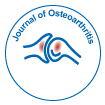Opinion Article
Prevalence of Anxiety Symptoms and it Impact in People with Osteoarthritis: An Update
Ray Marks*
Departments of Health, Physical Education & Gerontological Studies and Services, City University of New York, York College and Health and Behavior Studies, Columbia University, Teachers College, New York, USA
- *Corresponding Author:
- Ray Marks
Professor, Departments of Health, Physical Education
& Gerontological Studies and Services
City University of New York, York College and
Health and Behavior Studies, Columbia University
Teachers College, New York, USA
Tel: 1-212-678-3445
Fax: 1-212-678-8259
E-mail: rm226@columbia.edu
Received date: January 04, 2016; Accepted date: February 22, 2016; Published date: March 17, 2016
Citation: Marks R (2016) Prevalence of Anxiety Symptoms and it Impact in People with Osteoarthritis: An Update. J Ost Arth 1:110.
Copyright: © 2016 Marks R. This is an open-access article distributed under the terms of the Creative Commons Attribution License, which permits unrestricted use, distribution, and reproduction in any medium, provided the original author and source are credited.
Abstract
Anxiety, a very common psychological syndrome in the aging population, is a potential moderating factor in the context of disabling osteoarthritis, the most common joint disorder affecting the older population. This narrative review examines the extent to which anxiety may preside among adults with a diagnosis of osteoarthritis, regardless of site, and its linkage to the disabling process. Drawn largely from English language peer reviewed publications over the last 35 years, articles that discussed the topic of anxiety among cases with osteoarthritis were examined to demonstrate that this correlate is very important to evaluate and is amenable to treatment. Although not well represented in the vast body of literature, ample evidence implies untreated anxiety is likely to produce excess pain, and less optimal outcomes than that which is treated. It is concluded that more attention to this correlate in the clinical realm is highly desirable to offset the deleterious outcomes associated with one or more forms of anxiety, regardless of joint site, or disease duration.

 Spanish
Spanish  Chinese
Chinese  Russian
Russian  German
German  French
French  Japanese
Japanese  Portuguese
Portuguese  Hindi
Hindi